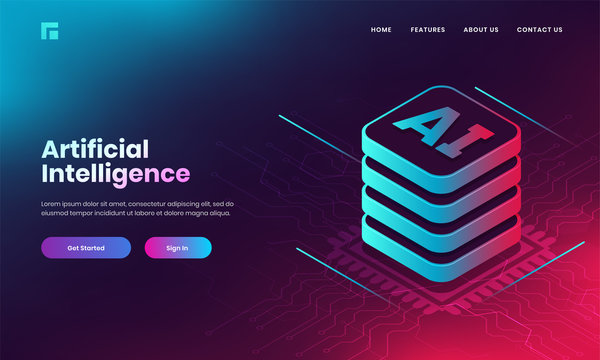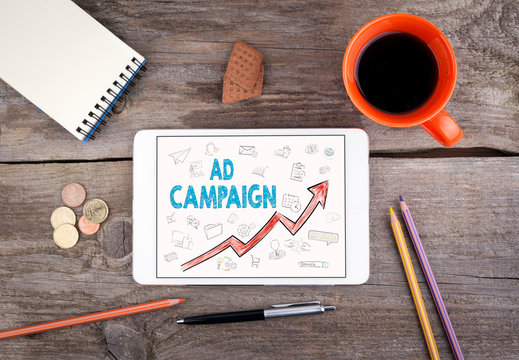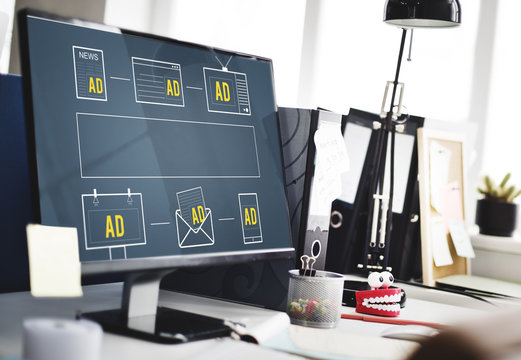As the world of advertising continues to evolve, so do the tools and strategies that businesses use to reach their target audience. One such tool that has been gaining momentum in recent years is artificial intelligence (AI) design. But what exactly is AI design, and how can it help you maximize your advertising potential? In this blog post, we will explore the benefits of using AI design tools in your advertising campaigns and how they can take your marketing efforts to the next level. So buckle up and get ready to learn about the exciting possibilities that await you with AI design!

Introduction: The Benefits of AI Design Software for Advertising
As the world becomes increasingly digitized, AI design software for advertising has emerged as a game-changing tool in the industry. With its ability to analyze user data and create personalized content, AI is revolutionizing how advertisers approach visual marketing.
One of the main benefits of using AI design software is its efficiency. Instead of spending countless hours brainstorming and iterating designs, advertisers can utilize tools that offer instant feedback on what works and what doesn’t.
Additionally, AI design software for advertising allows for more targeted messaging by tailoring ad designs to specific demographics or even individuals based on their search history or social media activity.
But it’s not just about creating pretty pictures – AI can also measure the effectiveness of ad campaigns through metrics like click-through rates and conversion rates. This insight helps advertisers make informed decisions when refining their strategies moving forward.
Overall, implementing AI into advertising design offers a multitude of advantages that businesses cannot afford to ignore in today’s competitive digital landscape.

Understanding the Role of AI in Advertising Design
Artificial intelligence (AI) is becoming increasingly common in the advertising industry. AI design software can analyze data, create personalized content, and even generate ads with minimal input from designers. The role of AI in ad design is to help companies create more effective campaigns by analyzing consumer behavior and preferences.
By analyzing customer data, AI software can determine which elements are most likely to capture a viewer’s attention. It can also automatically test different variations of an ad to see which one performs best. This allows advertisers to optimize their campaigns for maximum effectiveness while minimizing costs.
Additionally, some AI design tools now incorporate machine learning algorithms that allow them to learn over time and continuously improve their output. As these tools become more advanced, it seems inevitable that they will play an ever-increasing role in the advertising industry, allowing businesses of all sizes to compete on a more level playing field than ever before.
How AI Can Help You Create More Effective Ad Designs
Personalization and efficiency are two key benefits of using AI design software for advertising. With the ability to analyze data and understand consumer behavior, AI can help you create more effective ad designs that resonate with your target audience. Personalization is particularly important in today’s market where consumers expect tailored experiences from brands.
In addition, AI can improve the efficiency of your ad creation process by automating repetitive tasks such as image selection and copywriting. This not only saves time but also allows for more experimentation with different ad variations to find what works best.
Overall, incorporating AI into your advertising design strategy can lead to more effective ads that drive better results while saving time and resources in the process.

Top AI Design Tools to Use for Advertising Campaigns
Top AI Design Tools to Use for Advertising Campaigns
When it comes to using AI design software for advertising, there are a number of tools available in the market. Among these tools, Canva and Adobe Sensei stand out as some of the best options for creating effective ad designs.
Canva, a popular graphic design tool, offers a user-friendly interface and numerous templates specifically designed for social media platforms like Facebook, Instagram and Twitter. With its drag-and-drop feature along with access to free stock images and ready-to-use fonts, Canva makes designing ads simple yet powerful.
Another great option is Adobe Sensei, which uses machine learning algorithms to analyze data and create customized designs based on audience preferences. This tool helps designers create more personalized ads that can resonate well with their target customers.
Both Canva and Adobe Sensei provide features such as real-time collaboration between team members, customizable templates for different ad formats such as posters or banners along with an extensive library of pre-designed elements making them essential software programs in any marketer’s toolbox.

Tips and Tricks for Maximizing Your Ad Potential with AI Software
Streamlining Your Ad Creation Process with AI Design Tools
Using AI design software for advertising can help streamline your ad creation process and maximize the potential of your campaigns. To make the most out of these tools, it’s important to start by setting clear goals and objectives for each campaign. From there, use the software to explore different design options quickly and efficiently. Take advantage of features like A/B testing and predictive analytics to optimize your designs based on past performance data. By utilizing AI technology in advertising, you can save time, reduce costs, and improve overall effectiveness in reaching your target audience with eye-catching ads.
Utilizing AI to Optimize Ad Performance and Reach
Utilizing AI design software can help you optimize your ad performance and reach. By analyzing data and user behavior, AI tools can provide insights on what type of ad designs are most effective for your target audience. Use A/B testing to compare different ad designs and see which ones perform better. Additionally, AI can help you personalize your ads based on user preferences and demographics, increasing the chances of engagement. Finally, consider using AI-powered tools for ad placement and targeting to ensure your ads are reaching the right audience at the right time. With these tips, you can maximize your advertising potential with the help of AI design software for advertising.
Designing Ads That Resonate with Your Target Audience Using AI
When using AI design software for advertising, it’s important to consider your target audience. Utilize the power of AI technology to analyze data and identify patterns about your audience’s preferences. With this insight in mind, you can create ads that are tailored to their needs and interests, increasing the chances of conversion. Another key aspect is personalization; use dynamic content generation features offered by some AI design tools to automatically create custom ads based on user behavior data. By harnessing the capabilities of AI design software, you can ultimately create more impactful and resonant ad designs that effectively reach your desired audience while saving time and resources.
Maximizing ROI: How AI Design Tools Can Help You Create More Effective Ads
One of the biggest advantages of using AI design software for advertising is that it can help you maximize your ROI by creating more effective ads. With AI tools, you can quickly generate multiple ad variations and test which ones perform the best. This data-driven approach allows you to adjust and optimize ad design elements such as images, fonts, colors, and copy based on their impact on engagement rates or conversion rates.
Moreover, AI can analyze vast amounts of consumer data to identify patterns in their behavior, preferences and interests. By doing so you could understand better how your target audience interacts with your brand, what influences them to make a purchase decision and even predict future trends. All these insights will enable you to create targeted content campaigns that are more engaging and likely to drive conversions.
Case Studies: Examples of Successful Ads Created with AI Tools
Case Studies: Examples of Successful Ads Created with AI Tools
Keyword phrase 1: AI-generated ads ** Keyword phrase 2: Machine learning for advertising**
Numerous companies have already started to harness the power of AI-generated ads. For example, Adidas came up with an innovative way to create unique sneaker designs using machine learning algorithms. The company trained the algorithm on over 50 years’ worth of iconic Adidas sneakers and then let it generate new designs based on what had been most successful in the past.
Another impressive case study comes from Burger King’s ‘Whopper Detour’ campaign, which used geolocation data to offer customers $0.01 Whoppers if they ordered through their app while inside a McDonald’s location, resulting in a massive increase in sales.
Using machine learning for advertising isn’t just limited to generating ad visuals either – Spotify uses its vast user data to target listeners with highly personalized audio advertisements that feel like recommendations from friends rather than traditional ads.
Overall, these case studies demonstrate how incorporating AI into your advertising campaigns can help you reach new levels of success and achieve better ROI than ever before.
Overcoming Common Challenges When Using AI in Advertising Design
Understanding the Limitations of AI Design Tools in Advertising
While AI design software for advertising can be incredibly helpful, it’s important to understand its limitations. AI tools are not a replacement for human creativity and intuition. They can only work with the data and parameters they are given, which means that they may not always produce the most innovative or unique designs. Additionally, AI tools may struggle with more complex design tasks or those that require a high level of customization. It’s important to remember that AI is a tool to assist in the design process, but it should not be relied on solely for all aspects of advertising design.
Achieving a Balance Between Human Creativity and AI Efficiency
One of the common challenges when using AI design software for advertising is achieving a balance between human creativity and AI efficiency. While AI can generate designs quickly and efficiently, it may lack the creative flair that only humans can provide. To overcome this challenge, it’s important to find a balance between the two. One way to do this is by using AI tools to generate design ideas and then refining them with human creativity. Another approach is to use AI software that allows for customization and creative input from humans. By finding the right balance, you can maximize the potential of both human creativity and AI efficiency in your advertising campaigns.
Choosing the Right AI Design Tool for Your Advertising Needs
When it comes to choosing the right AI design software for advertising, there are several factors to consider. One key consideration is whether the tool has features that cater specifically to your advertising needs, such as creating visually appealing ads or optimizing ad placements. Another important factor is ease of use and compatibility with other tools you may be using in your ad creation process. Additionally, it’s important to research and compare different options before selecting a tool to ensure it aligns with your budget and business goals. By considering these factors when choosing an AI design tool for advertising purposes, you can overcome common challenges and maximize your ad potential.
Incorporating User Feedback into AI-Generated Ad Designs
One challenge of using AI design software for advertising is ensuring that the generated designs align with user preferences. This can be overcome by incorporating user feedback into the design process. By gathering data from target audiences, AI algorithms can learn what types of visuals and messaging resonate best and adjust their output accordingly. It’s also important to note that while AI-generated designs can streamline the process, they should never replace human creativity or intuition entirely. A balance between data-informed decisions and instinctual design choices will result in more successful ad campaigns.

Conclusion: The Future of Advertising and the Role of Artificial Intelligence
As technology continues to advance, the role of artificial intelligence in advertising design will only become more prominent. Maximizing the potential of AI design software for advertising campaigns can lead to more effective and efficient ad designs. However, it is important to note that AI is not a replacement for human creativity and expertise. Rather, it is a tool that can enhance and streamline the design process.
In the future, we can expect AI to play an even greater role in advertising, from personalized ad targeting to dynamic ad creation. As such, it is important for businesses to stay up-to-date with the latest AI design tools and techniques in order to stay competitive in the advertising landscape.
Overall, incorporating AI into your advertising design strategy can lead to improved results and a more efficient workflow. By embracing this technology and staying ahead of the curve, businesses can ensure they are maximizing their advertising potential in an ever-evolving digital world.
In conclusion, AI design software for advertising is a game-changer in the industry. It offers numerous benefits, including increased efficiency, accuracy, and effectiveness in creating ad designs. By understanding the role of AI in advertising design and utilizing top AI design tools, advertisers can maximize their ad potential and achieve better results. However, it’s important to note that there may be challenges when using AI in advertising design, such as data privacy concerns or the need for human creativity. Nonetheless, the future of advertising is undoubtedly intertwined with artificial intelligence. As technology continues to advance, we can expect to see even more innovative ways that AI can help advertisers create impactful campaigns.
